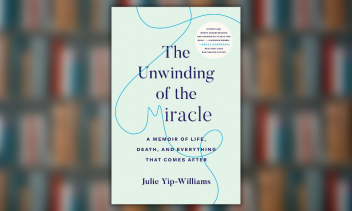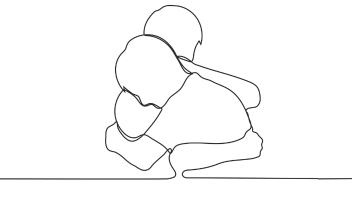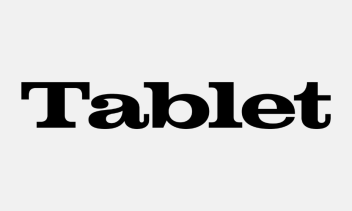Excerpted from IT’S OKAY THAT YOU’RE NOT OKAY: Meeting Grief and Loss in a Culture That Doesn’t Understand, by Megan Devine. Sounds True, October 2017. Reprinted with permission.
There’s such a pervasive weirdness in our culture around grief and death. We judge, and we blame, dissect, and minimize. People look for the flaws in what someone did to get to this place: She didn’t exercise enough. Didn’t take enough vitamins. Took too many. He shouldn’t have been walking on that side of the road. They shouldn’t have gone to that country if it has a history of monsoons. She shouldn’t have gone out to that club, knowing how dangerous it is these days. If he’s that upset, he must not have been very stable before this happened. I bet they had unresolved childhood issues—see what unhealed issues do to you?
I have a theory (as yet scientifically unproven) that the more random or out-of-order the loss, the more judgment and correction the grieving person hears. It’s like we just can’t reconcile the fact that someone could be alive and well at breakfast and dead by lunch. We can’t understand how someone who ate well, exercised, and was a generally good human being can get cancer and die at the age of thirty-four. We can’t understand how a perfectly healthy child can drop dead of what started as a simple cough. How someone biking to work, using a dedicated bike lane, wearing reflective clothing, their bike adorned with flashing lights, can be struck and killed in an instant.
They had to have done something terribly wrong. There has to be a reason.
It’s terrifying to think that someone who seemingly did everything right could still die. It’s terrifying to look at a person torn apart by their grief, knowing that could be us someday.
Being close to someone else’s pain makes us feel pain. Our brains know we’re connected.
Losses like this highlight the tenuous nature of life. How easily, how quickly life can change. When Matt died, the one (and only) news story I read blamed him for his death because he wasn’t wearing a life jacket. To go swimming. The more polite comments underneath the article made Matt into an angel, looking over everyone, even those who didn’t know him; his work on earth was done. Far more of the comments blamed me for “making” him go in the water, or castigated both of us for being too stupid to know better.
In the days after Matt died, I overheard more than one conversation in which people judged my response to Matt’s death quite unfavorably. Keep in mind that I wasn’t publicly screaming, didn’t hit anyone, and wasn’t causing big “scenes” anywhere. I was simply—openly—very, very sad.
VICTIM SHAMING AND THE CULTURE OF BLAME
My experience of blame and judgment, both for my grief and of Matt in regard to his own death, is not unique. Most grieving people have felt judged and shamed inside their pain.
Especially when the loss is unusual, violent, or accidental, the backlash of blame is intense: we immediately point out what someone else did wrong. That person did something ridiculous or stupid; we would never do that. It soothes our brains, in some ways, to believe that through our own good sense, we, and all those we love, can be kept safe. And if something bad did happen (through no fault of our own), we’d be strong enough to handle it. Grief wouldn’t take us down like that; we’d deal with it so much better than that other person. Everything would be OK.
Brene Brown’s research states that blame is a way to discharge pain and discomfort. Intense grief is a reminder that our lives here are tenuous at best. Evidence of someone else’s nightmare is proof that we could be next. That’s seriously uncomfortable evidence. We have to do some fancy footwork (or rather, fancy brain-work) to minimize our discomfort and maintain our sense of safety.
When someone comes to you in your pain and says, “I can’t even imagine,” the truth is: they can imagine. Their brains automatically began to imagine. As mammals, neurobiologically, we’re connected to one another. Empathy is actually a limbic system connection with the other person’s pain (or their joy). Being close to someone else’s pain makes us feel pain. Our brains know we’re connected.
Seeing someone in pain touches off a reaction in us, and that reaction makes us very uncomfortable. Faced with this visceral knowledge that we, too, could be in a similar situation, we shut down our empathy centers. We deny our connection. We shift into judgment and blame.
It’s an emotionally protective instinct.
We do this on a personal level, but we also do it globally. We can see this clearly in our cultural epidemics of violence against women and minorities: the victim must have done something to deserve this. We see this in our response to large-scale natural and manmade disasters as well: in the aftermath of the 2011 tsunami in Japan, some called it “karmic payback” for Japanese attacks on Pearl Harbor.
In many different ways, in many different forms, our response to others’ pain is to lob blame: if something terrible happens, you brought it on yourself.
Blaming someone for their pain—whether that’s grief or some kind of interpersonal violence—is our go-to mechanism. How quick are we to demonize rather than empathize. How quick we are to move into debate, rather than hang out in the actual pain of the situation.
At the root of our fears around grief, and in our approaches to grief and loss, is a fear of connection. A fear of acknowledging—really feeling—our relatedness. What happens to one person can happen to anyone. We see ourselves reflected in another person’s pain, and we don’t like to see ourselves there.
Disasters and deaths bring out a level of emotional empathy that asks you to go there, to acknowledge that this could happen to you or someone you love, no matter how safe you try to be. We hate to see evidence of the fact that there is very little in this life over which we have control. We’ll do almost anything to avoid letting that in. What starts as limbic system-based connection reverts to a brain stem survival instinct, an us-or-them response, that puts those in pain on the wrong side of the line, and us, always on the right. We distance ourselves from pain rather than feel annihilated by it.
The culture of blame keeps us safe. Or rather, it lets us believe we’re safe.
DOWN THE RABBIT HOLE OF PAIN AVOIDANCE
We want so desperately to see evidence that everyone we love is safe, and will always be safe. We want so desperately to believe we’ll survive, no matter what happens. We want to believe we have control. To maintain this belief, we’ve created—and sustained—an entire culture based on a magical thinking continuum: think the right thoughts, do the right things, be evolved/nonattached/optimistic/faithful enough and everything will be OK. In chapter 3, we talked about the cultural of redemption and transformation. That, too, is part of this survival safety mechanism.
Pain and grief are never seen as healthy responses to loss. They’re far too threatening for that. We resist them in equal measure to our fear of being consumed by them.
The problem with this—among many problems—is that it creates a socially acceptable blame structure in which any kind of hardship or pain is met with shame, judgment, and an admonishment to get back to “normal” quickly. If you can’t rise above it, you are, once again, doing something wrong.








